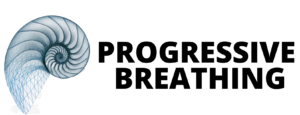The Hidden Dangers of Fast-Paced Holotropic or Mouth Breathing: A Critical Look at Stress Responses, Misconceptions, and Safer Alternatives
Fast-paced holotropic breathing and its variants, particularly those focused on mouth breathing, have gained popularity as methods for inducing altered states of consciousness, often touted as tools for spiritual breakthroughs and somatic release. However, the physiological effects of rapid, mouth-based breathing are far more complex and potentially harmful than many facilitators suggest. Rather than fostering genuine spiritual or emotional release, these practices often induce a stress response that puts the body in fight, flight, or freeze mode—a survival mechanism that can lead to physical and psychological breakdown, not breakthrough.
The Stress Response: Preparing the Body for Emergency
When someone engages in fast-paced mouth breathing, the body interprets this as a signal of danger or impending threat. The sympathetic nervous system—responsible for our fight-or-flight response—becomes activated. This stress response causes several significant physiological changes:
- Blood Redistribution: Blood is pulled away from the extremities (hands, feet, and skin) and redirected to the major organs—heart, lungs, and brain—in preparation for an emergency. This occurs because the body believes it needs to conserve resources for immediate survival.
- Breakdown, Not Breakthrough: This stress-induced state causes the body to break down as it braces for potential harm, depleting energy reserves and diverting focus away from healing, digestion, and restoration. Rather than experiencing a “spiritual breakthrough” or emotional release, the body is instead engaging in a protective response meant to safeguard itself from perceived threats. This is not conducive to healing or growth but rather to surviving a perceived crisis.
Tetany: A Sign of Dysfunctional Breathing, Not Somatic Release
One of the commonly observed symptoms during fast-paced holotropic breathing is tetany, also known as the “claw effect,” where hands or feet involuntarily contract or stiffen. Facilitators may interpret this as a sign of somatic release or energy movement, but in reality, it’s a symptom of dysfunctional breathing and hypocapnia (low carbon dioxide levels in the blood).
- Tetany occurs because rapid, shallow mouth breathing reduces carbon dioxide levels, which upsets the delicate balance of electrolytes (such as calcium) in the body, leading to muscle spasms.
- This is not a natural or desirable response, and it is never seen when practicing slow, deep, rhythmic nasal breathing, which allows the body to maintain a state of balance (homeostasis).
Holotropic Breathing Dangers and Nervous System Stress: Misunderstanding Somatic Release
Many people believe that by intentionally putting the body into a state of nervous system stress through fast-paced breathing, they are facilitating a somatic release—a discharge of stored trauma or emotions. However, this approach often fails to achieve genuine emotional or psychological release. Here’s why:
- Nervous System Overload: Rapid breathing floods the nervous system with stress hormones like cortisol and adrenaline, which overwhelm the body’s natural coping mechanisms. This can lead to dissociation, anxiety, or panic, rather than resolution of stored emotions.
- False Breakthrough: The so-called “release” that some people feel after fast-paced breathing is not a true emotional or somatic release but rather a temporary state of relief caused by stopping the stressful breathing pattern. When the breathing slows, carbon dioxide levels rise again, and the body returns to a state of homeostasis. The lightheadedness and euphoria that people experience come from this transition back to balance, not from the stress-inducing breathing itself.
Mouth Breathing: A Dangerous Habit for Stress and Anxiety
Mouth breathing, especially during fast-paced holotropic sessions, can be dangerous for several reasons:
- Stress Breathing: Mouth breathing is the body’s natural response to stress or anxiety, which exacerbates the sympathetic nervous system’s fight-or-flight activation. This reduces the ability to access calm and restorative parasympathetic states.
- Health Risks: During group sessions, mouth breathing allows people to breathe in bacteria from others around them, increasing the risk of illness. Unlike the nose, which has filters and produces nitric oxide to sterilize incoming air, the mouth offers no protection against pathogens.
Holotropic Breathing: No True Spiritual Awakening or Internal Circuit Connection
Fast-paced mouth breathing does not stimulate the body’s natural electrical circuits, such as the microcosmic orbit described in Daoist and Qi-Gong practices. In contrast, slow, deep nasal breathing:
- Activates the diaphragm, which encourages proper circulation of cerebrospinal fluid (CSF), essential for brain and nervous system health.
- Generates nitric oxide in the nasal passages, which improves oxygen absorption and blood circulation.
- Enhances energy flow along the governing and conception vessels, vital pathways in Qi-Gong that are analogous to the Ida and Pingala nadis in Kundalini Yoga. Fast-paced breathing bypasses this delicate system, cutting off vital pranic energy flow.
True Brainwave States Are Achieved Through Stillness, Not Strain
Many believe that fast breathing can induce elevated brainwave states such as theta or gamma (associated with meditation and deep spiritual experiences). However, these brainwaves are actually achieved through silence, stillness, and non-doing states, when the body is in complete relaxation. It is not the heaving, huffing, and puffing of extreme breathing techniques that open these doors, but calm, rhythmic, diaphragmatic nasal breathing.
- Brainwave Elevation: The deepest states of spiritual awareness—such as those connected to DMT release or theta brainwaves—arise when the mind and body are in a state of emptiness and relaxation, not in a state of hyperactivity.
In contrast, fast-paced mouth breathing agitates the nervous system and busies the mind, preventing true transcendence.
The Safer, Proven Benefits of Slow, Deep Nasal Breathing
Unlike mouth breathing, nasal breathing provides numerous health and spiritual benefits:
- Protection and Filtration: Nasal passages filter out dust, allergens, and pathogens while also humidifying and warming the air, protecting the respiratory system.
- Nitric Oxide Production: Nasal breathing stimulates the production of nitric oxide, a molecule that promotes vasodilation, improves oxygen transport, and even supports immune function.
- Balanced Nervous System: Slow nasal breathing engages the parasympathetic nervous system, fostering relaxation, reducing stress, and preventing nervous system overload.
- Internal Circuit Activation: Nasal breathing allows for the natural placement of the tongue at the roof of the mouth, which connects the microcosmic orbit (the body’s electrical circuit). This connection is essential for achieving true spiritual awakening and heightened states of consciousness.
- Spiritual Awakening Through Rhythmic Breathing: Unlike holotropic breathing, which forces an unnatural state of stress, slow, rhythmic nasal breathing enhances diaphragmatic movement, releases endogenous DMT, and induces natural trance states—the same experiences sought after in many spiritual traditions, including Qi-Gong, Kriya Yoga, and Taoism.
Choose Slow, Deep Nasal Breathing for Healing and Awakening
While fast-paced mouth breathing may be marketed as a quick route to spiritual awakening or emotional release, it actually induces a dangerous stress response that disrupts the body’s natural electrical circuits and healing processes. The benefits attributed to holotropic breathing arise not from the practice itself but from the relief experienced when stopping.
In contrast, slow, deep, rhythmic nasal breathing—rooted in ancient practices like Qi-Gong, Kriya Yoga, and Daoism—provides a safe, sustainable way to optimize health, promote spiritual awakening, and cultivate inner peace. Through nasal breathing, the body remains balanced, the mind calm, and the spirit aligned with its highest potential.
Find 3 Free Nasal Breathing Practices to Optimize your Health.



